Getting to know many bloggers in California has introduced me to the concept of lawn controversy: the fact that there is a strong and vocal movement against having lawns altogether.
One of my first posts about lawns here got a heated comment from Twitter friend and California blogger Billy Goodnick. He described it as unleashing both barrels, as I recall, and he certainly got his point across.
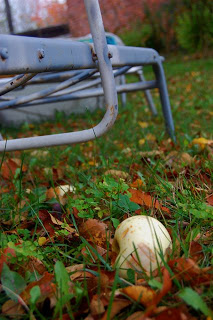 It makes sense that in severely water-challenged California, a strict dependence on lawns in the landscape is generally not a good thing. When I visited California in the 60s, I recall that among the things that impressed me was the lack of grass lawns. They were growing some other stuff that stayed low and flat. Not sure what it was. Maybe it’s considered just as bad as grass now.
It makes sense that in severely water-challenged California, a strict dependence on lawns in the landscape is generally not a good thing. When I visited California in the 60s, I recall that among the things that impressed me was the lack of grass lawns. They were growing some other stuff that stayed low and flat. Not sure what it was. Maybe it’s considered just as bad as grass now.
For myself, here in Ontario, where rainfall is generally predictable through the growing season, I have to admit that I love the soothing, greening presence of a lawn, especially late in the day when the sun is low and the green positively glows.
The lawn outside my country house is dappled with sun and shade in the late afternoon and early evening; seeing a robin hop about on it is one of my garden delights.
My definition of Lawn is not the traditional one, however. It’s not made solely of grass, it’s a mixed groundcover. It isn’t watered or chemically fertilized, and it’s created mostly of plants that simply grew there themselves.
Perhaps a long time ago someone sowed some lawn seed. The building is a former one-room schoolhouse, and the land around it was the playground. Today, the lawn is a mix of grass, wild strawberries, white clover, dandelions, plantain, creeping charlie, devil’s paintbrush, moss, viper’s bugloss, daisies and other wildflowers. It’s my kind of lawn: a healthy, mown meadow.

It Ain’t a Lawn, It’s a Meadow
The more species you have in your groundcover or meadow, the healthier it is: clover adds nitrogen, withstands drought and stays green longer than grass. Its flowers provide a sea of pollinator opportunities. Wild strawberries and dandelions (apart from attracting pollinators) are dynamic accumulators, bringing nutrients from the subsoil to the topsoil.
My advice to anyone who still wants to have a lawn: Forget a monoculture, made only of grasses, and invite other plants to make up your groundcover. Start with white clover, and re-seed bare patches with that. Embrace your dandelions! They offer the earliest source of nectar in the spring for our disappearing pollinators.
The lawn that I do have in the country is disappearing fairly regularly as I increase my flower and shrub beds. However, I will always have some form of lawn on my property. Mowing the meadows is a necessity in order to stop the creeping growth of shrubs I battle, like the sumach and lilac which would colonize every square inch of space if I let them.
About Watering
I wouldn’t dream of watering my lawn, even if my well had enough water to do so. (It doesn’t.) Lawns are capable of surviving drought in our climate.
In August, when lawns get crunchy from the heat and lack of water, they are still alive: just dormant. It’s important for lawn-owners to accept this dormant period as normal. A yellow lawn doesn’t mean a dead lawn. Don’t water! Simply wait for the September rains to green them up again.
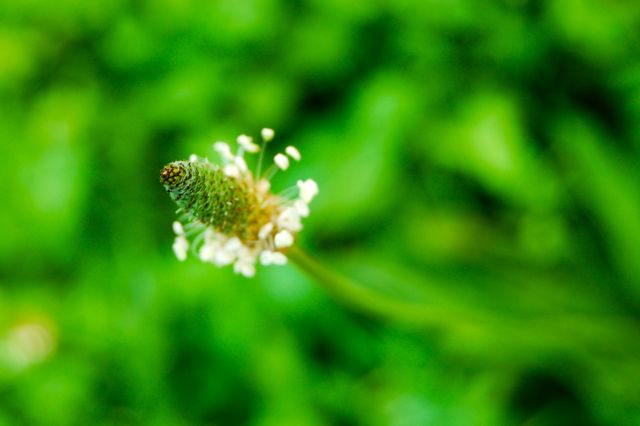
The Meadow-ing of City Parks
I’m very happy that the parks department in Toronto long ago stopped the practice of using herbicides and fertilizers in the parks and roadsides. We were marvelling at the masses of fragrant clover in bloom yesterday in the park adjacent to my community garden in East York. Bees were having a field day.
Even with all this praise of meadows, there are places and spaces where lawns are just the wrong thing to do: California and other drought-stricken climes seem to be those places, and I salute the landscapers and gardeners who are doing their part there to De-Lawnify the place.
Check out Billy Goodnick and gang in their music video,”Takin’Out the Grass.” Billy’s the one juggling the sod. (warning: you won’t be able to get this tune out of your head for a while!)

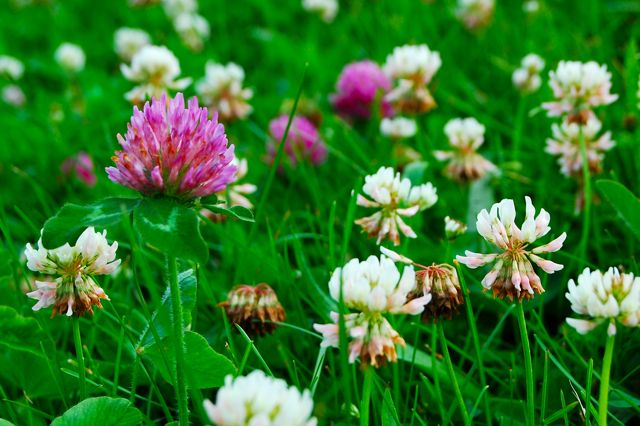
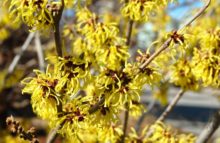
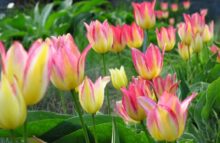

15 comments
Delighted to hear that Toronto has given up herbicide use on the roadside. We are still battling to stop that here.
What a lovely take on the lawn. I do admit there is nothing better than standing barefoot in the grass on a summer day. Really enjoyed the pictures too. Cheers! Teresa
A lovely piece…as you know, summer-dry places like California have a three-part issue with lawns: water, chemicals, and the incessant mowing, blowing and edging (using gasoline powered tools) that keep these often over-watered and over-fed monocultures under control. A natural 'mille-fleurs'meadow like yours seems quite another thing…thank you for sharing it!
Great piece on how and where lawns can be a positive part of the garden, and how in other situations and regions they are not workable and extremely wasteful.
Our country property lawn is a mixed bag too, although we did plant it, as we started with a blank slate (former hayfield turned into soybean field for one season). We used Eco-lawn on one field and another low maintenance mix on another field. Clover and other plants have come to be mixed in and it looks nice. Like you, I can't imagine this property without lawn.
I wonder though whether dandelions really are good early season nectar plants. The tree farm near us is a field of dandelions in the spring, and I walk through it often with my dog, (whose white fur gets yellow there are so many). I rarely see insect pollinators on the dandelions. Meanwhile, my bulb plants, such as scilla are teeming with honeybees and other insects.
This is how our lawn has been for 28 years. Dandelions, violet, aguga, clover, plantains and more. No chemicals and the clippings are collected for mulch and compost. We had sewers put in three years ago and we seeded with a grass mixture. It looked horrible until we over-seeded with clover and now it looks great. It doesn't brown out like those in the developments do without constant watering.
Since I fly down to California every now and then, I can understand the attitude that many Californians have toward lawns. It is so dry there. Here, where everything is green year-round, and it rains a lot, the only problem with grass is that people don't aerate it enough, causing water to run off the top, cause flooding and possibly back into the streams. "Rain Gardens" are becoming popular here in attempt to deal with the excess water.
We have grass and lots of it for the kids to play on. Unlike California, we are not able to grow food year round without drastic measures (heated greenhouses, cold frames, etc.), so we are very conscious to keep evergreen plants, including grass, in the landscape. Without those, our land would have bigger flooding problems.
I love to blog hop, but I have to remember that many people who are strong advocates of certain ideas tend to view life from their location. I often chuckle when Californians come up here and are absolutely amazed that our location is so green – naturally green. They stay a while, and then some can't wait to leave because it rains too much! LOL!
Sorry, this is not a comment on the lawn post. Just wondering how does one subscribe to this blog? I'd contact Sarah and/or Helen directly but can't find a contact option. I'm a blogging virgin and haven't a clue how to do this. Many thanks.
Such an interesting post and hilarious video! I'm hoping to remove part of my front lawn this year. Around here, a meadow lawn as you describe is common out in the country. But not in the town/city. Wish that weren't the case.
Super photos – I love the clover.
I've ready plenty about the lawn controversy, too. I think dicondra was the lawn substitute of choice for a while in Cal, but some sort of beetles (Japanese, maybe?) really loved the stuff, so it went out of style. The problem with white clover is that it attracts bees, which are then stepped upon by little feet and big ones. And does white clover make the pokey ball-shaped seeds, or are those from another type of clover that grew in my parent's lawn? I have bad memories of stepping on those as a kid. Since we love to walk around barefoot on our lawn, clover isn't invited. Maybe it will be different when the kiddos are grown.
Lovely photos, interesting post, really enjoyed reading it!
I love the video, and I'm with Laura, the maintenance is a huge issue with lawns in California. People still stop by and comment on my lawnless front garden, so while the movement is growing, it's not universal.
Even clover here would require a lot of water, and the parks are still spraying. Sigh.
That was a fun video. I have a lawn and really like it, though it takes the MOST amount of work and even expense. I'm like you, I need that green carpet and like how it sets off the gardens.
Peony Girl, sorry I am getting to you so late, but you can subscribe by clicking on the subscribe to posts option in the right sidebar under our picture. You need to have an RSS reader like Google or My Yahoo. Free to sign up for those. Then click the applicable link.
Great to hear all the viewpoints on the grass issue from all parts, dry and wet.
I hadn't thought about steppping on bees with clover in the lawn. Hasn't happened to me yet.
The ones with crunchy seed heads might be the red clover, it grows bigger with a bigger head, so not as suitable for lawns. White clover stays low to ground, and is mowable.
Our park system had clover, both red and white, that got quite tall during the recent civil workers' strike. Parks were not being mowed. It was meadows galore and the bees had a field day. Most parks are being cut now that the strike is over. But there might be lots of seeds already sown for next year.
We live in Cambridge and, after destroying our yard with a project to build a covered deck, we wish to create a meadow but are not sure how to start.
We have two large dogs so can't just have bare soil and then seed and I'm wondering about having grass turf laid and then overseeding with clover etc. Any advice?
GordonD